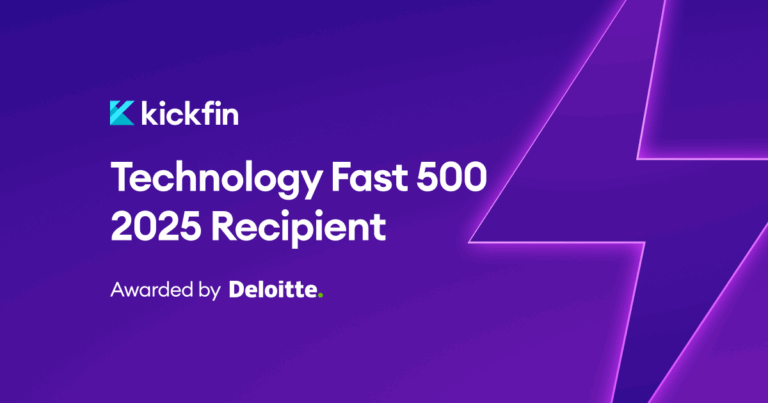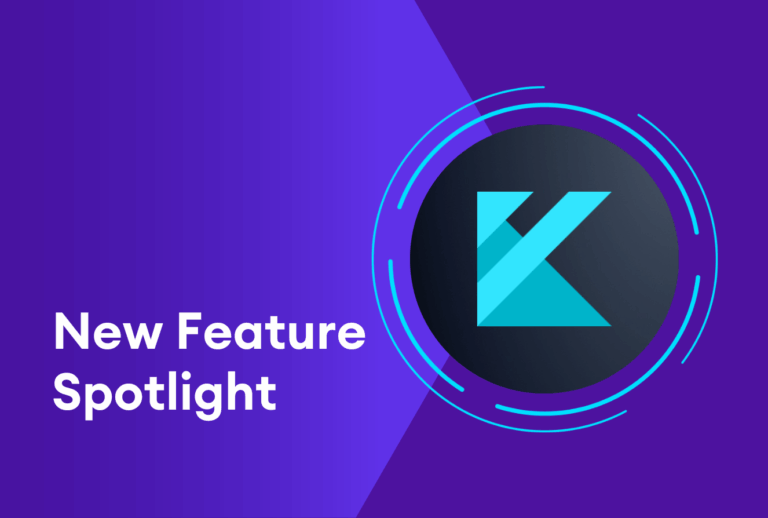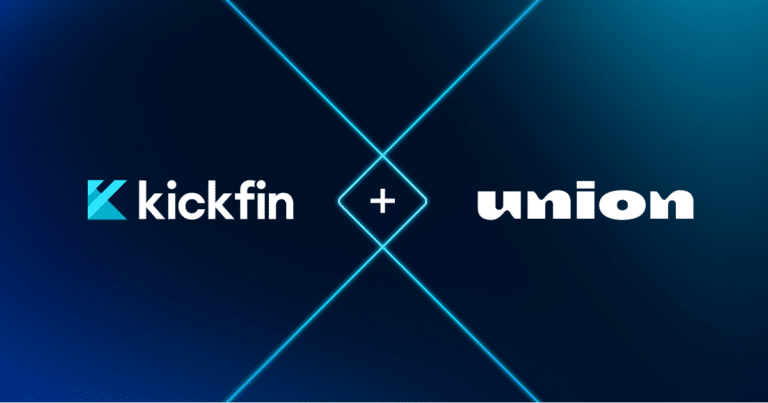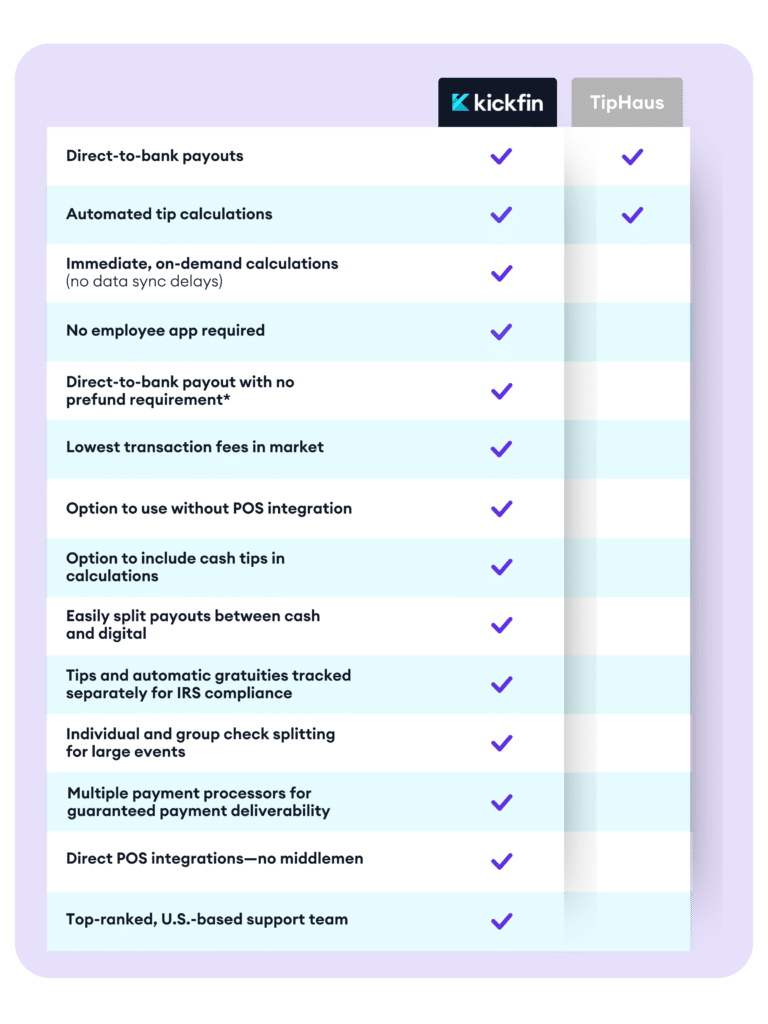Meet Christina.
As Director of Human Relations for all of the Georgia franchise Rock N’ Roll Sushi restaurants, Christina wears many hats. Between recruiting, onboarding, and tip distribution to over 80 employees, she basically has a hand in everything HR.
Trying out cashless tipping
At Rock N’ Roll Sushi, we’ve always been cashless. Originally, we paid tips on payroll, but we were looking for a more streamlined option. We started working with a different cashless tipping platform, which wasn’t bad, but it wasn’t as user-friendly nor as streamlined as Kickfin. We had to issue Visa cards to all of our employees, which made things pretty complicated for them. They had to move money around and pay fees to get the tips into their bank accounts to pay bills.
We weren’t looking to switch from our pay card provider and were kind of complacent when it came to our tip program at the time. We didn’t even realize there could be an easier process, but once we found out about Kickfin, there was no question about switching over.
We found out that corporate Rock N’ Roll Sushi locations were using Kickfin, so we started looking into it. We checked out an info session and spoke with a few people at Kickfin to dig in deeper. We ultimately decided to make the switch—which went so smoothly. The transition was so effortless with no residual issues or anything like that.
Administrative issues
One thing that really stood out to me was the ease of adding new employees. When we had a new employee ready to get on the floor and start earning tips, we had to set them up with a new tip card, upload their ID, and have them activate their account. We may not have had cards in stock or run into other issues, so sometimes this process could take up to two weeks, which not only left them without pay but also created a frustrating administrative process.
If a new employee had gone two weeks without activating their tips cards, we would have to go back at that point and look at their tip earnings and input each day’s tips into their account. Now, I can send new employees a Kickfin invite and start inputting their tips immediately. If for some reason that employee doesn’t get around to activating their account for a few weeks, the money is sitting in a sort of limbo account, ready for them to access. I no longer have to parse through 14 days of tip-out reports and can just run my normal tip-out distribution process instead.
I went over everything with my managers and explained to them how much more efficient Kickfin would be, both for the company and for employees. That’s easy to say since it’s saving them time and money too. Using tip cards, employees were charged $1.50 per transfer to their tip card, and from there, they’d be hit with ATM fees or fees to transfer tips into their bank accounts. With Kickfin, they’re saving at least a dollar if not more each shift, which meets our goal of keeping more money in employees’ pockets. Everyone loves it.
It was really simple because I’m the only one who pays out tips. Our managers don’t have to worry about it at all. With the tipped employees, we had no issues either. We just send them the invite via text or email, and it takes only about a minute to set up their accounts. And then boom, they have tips going straight to their bank accounts. We had really no issues and no complaints.
Visibility into tipping
One of the biggest benefits of switching to Kickfin is that we don’t have employees questioning their money or worrying about when their tip cards will be ready. Once they’re set up, they’re confident knowing that money is going to just flow into their accounts. Before, there would be a lot of confusion about the tip cards and visibility, but now we don’t even have technical issues enrolling people with Kickfin.
We do mention it when recruiting because one of the first things servers will ask is how they’ll be paid. It’s a determining factor for a lot of people in the service industry, whether they’re paid in cash daily, on payroll, or digitally. Servers don’t care about the hourly rate because tips are how they really make a living. It helps us sell them on working at Rock N’ Roll when we tell them their tips will go directly to their bank accounts after each shift.
Money & time saved
Another huge plus for me was the amount of time I saved. With our previous gratuity management platform, I had to manually enter each employee’s tip amount for the day. It was time-consuming, but also nerve-wracking. God forbid, I’m off by a line and pay tips to the wrong person, so I was constantly double and triple-checking my work. Now, I can upload a spreadsheet to Kickfin, which not only cuts down on mistakes but also the time it takes me to input tips. It went from three or four hours of work down to now about an hour and a half to input tips for all seven locations.
On a company level, Kickfin has also made a huge difference in our cash flows. Before switching to Kickfin, we would have to deposit funds into our float account on a weekly basis for all of our locations, which could mean a $40,000 withdrawal every Monday, because it’s hard to anticipate how much we’ll need to tip out each week. Some locations are busier than others, and obviously, some weeks are busier, too. Some weeks we’d have to reach out and ask them not to replenish the account because we still had too much sitting there. Other times, the float account would be empty by the time the weekend rolled around, so employees would have to wait until our account was replenished to access their tips.
Now with Kickfin, we pay out our tips, and then our float account replenishes every single day to bring us back up to $5,000. We never have to worry about having enough (or too much) money sitting in the float account and we don’t have to make huge cash allotments to pay our workers as we balance the budget. I don’t even look at our float account anymore because I know I don’t have to worry about it.
The transition team
When you’re making a big transition to a new platform, you always have fears and ask yourself, “Is this going to screw everything up? Am I going to have technical difficulties?” And I take it seriously because this is our employees’ livelihood, so you want it to go as smoothly as possible to not interfere with their pay. I normally would have been more stressed, but they would get back to me even with the silliest questions. We had a location that wasn’t quite open yet during our transition, but it would be ready very soon. We had a direct line of contact about this location, and basically, the Customer Success team just needed to know when we’d want the funds. We reached out once it was ready, and just like that, we were able to pull funds and pay employees. I’ve been more than satisfied with the service from Kickfin.
The bottom line.








